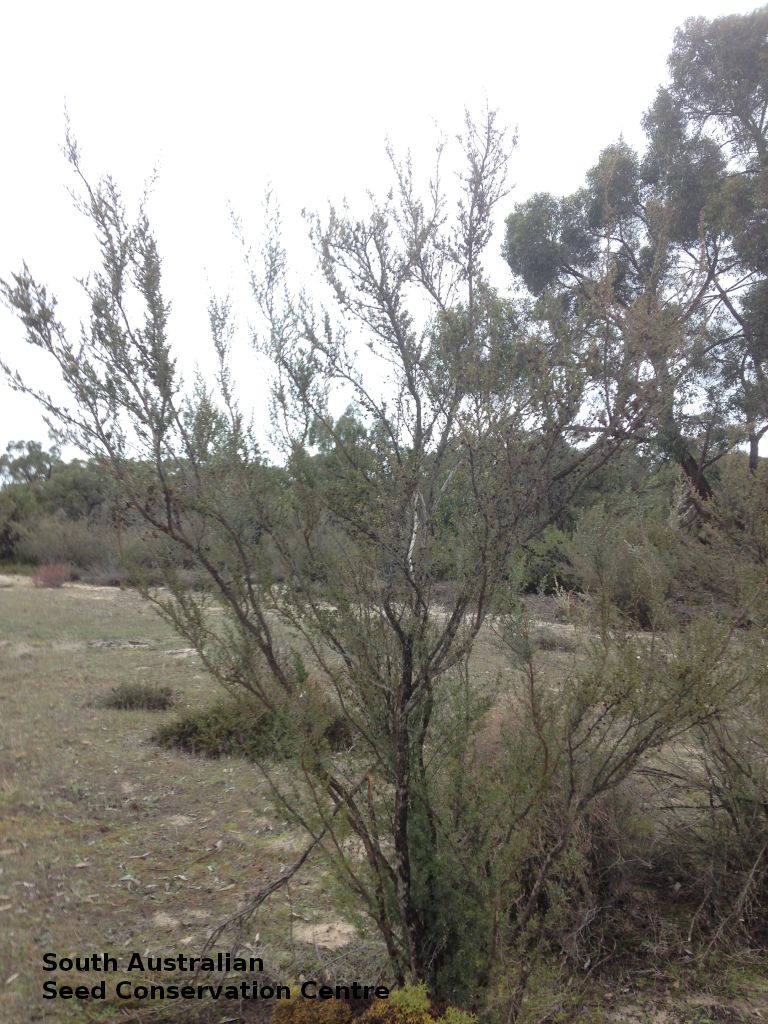
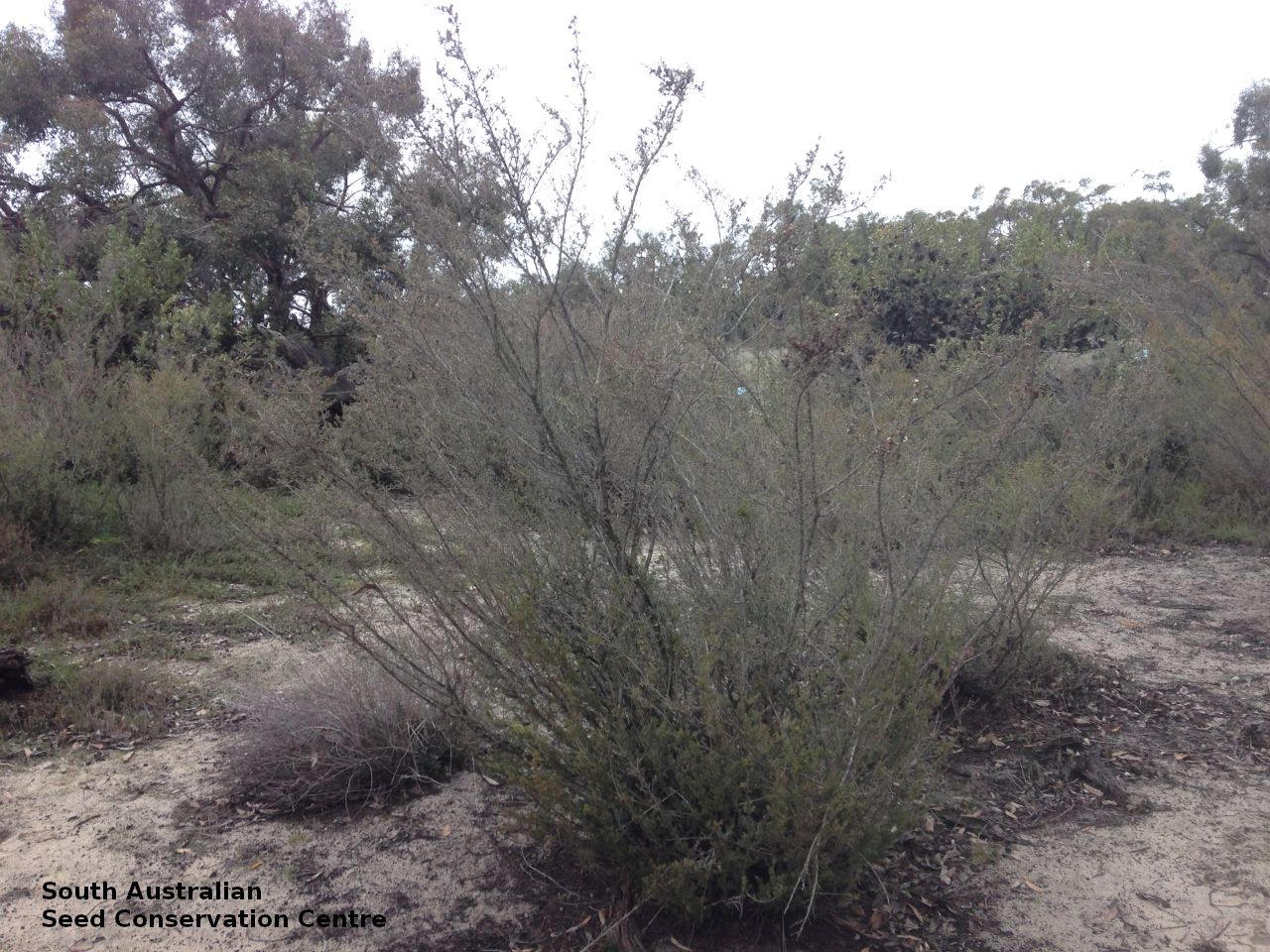
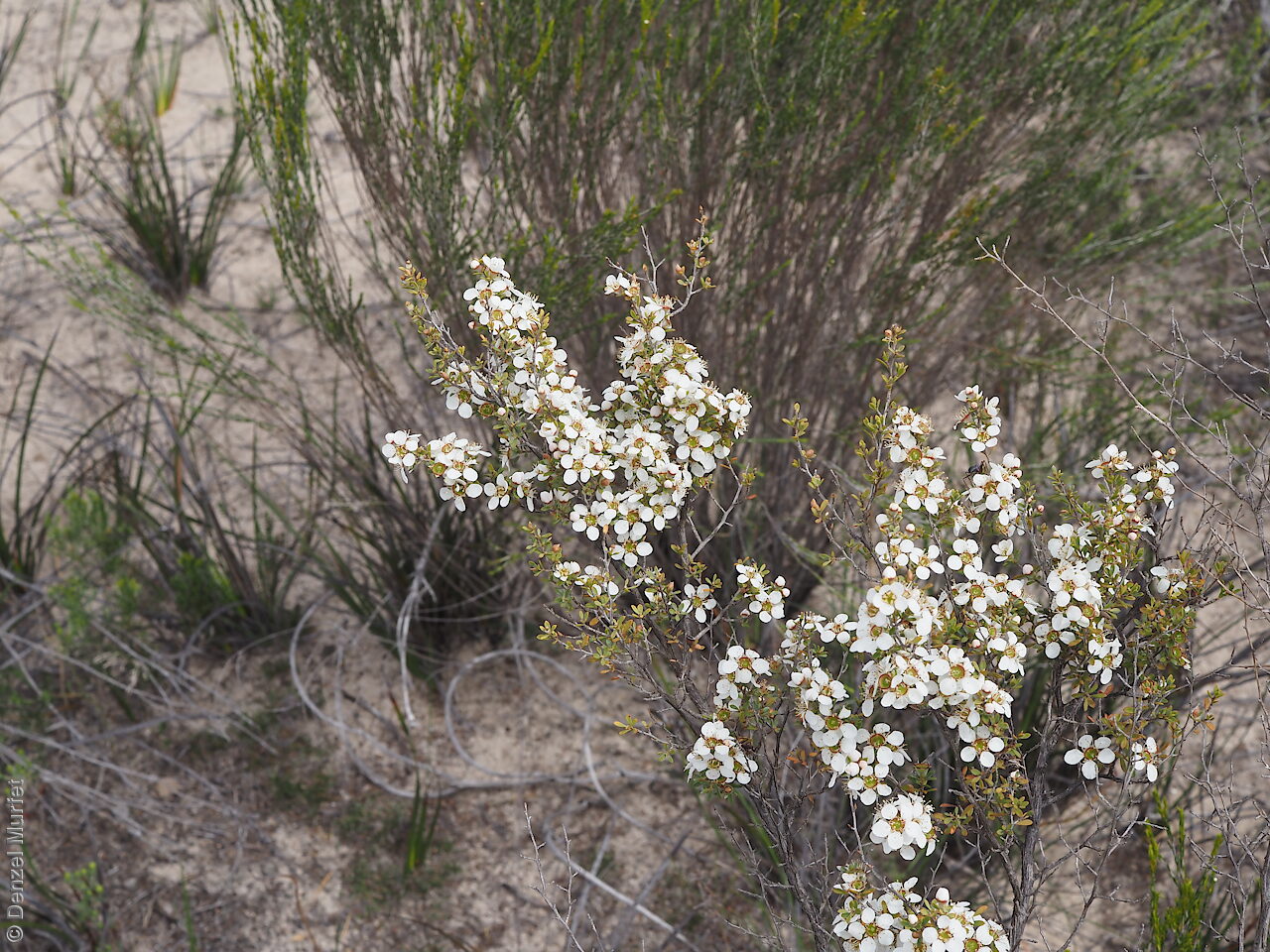
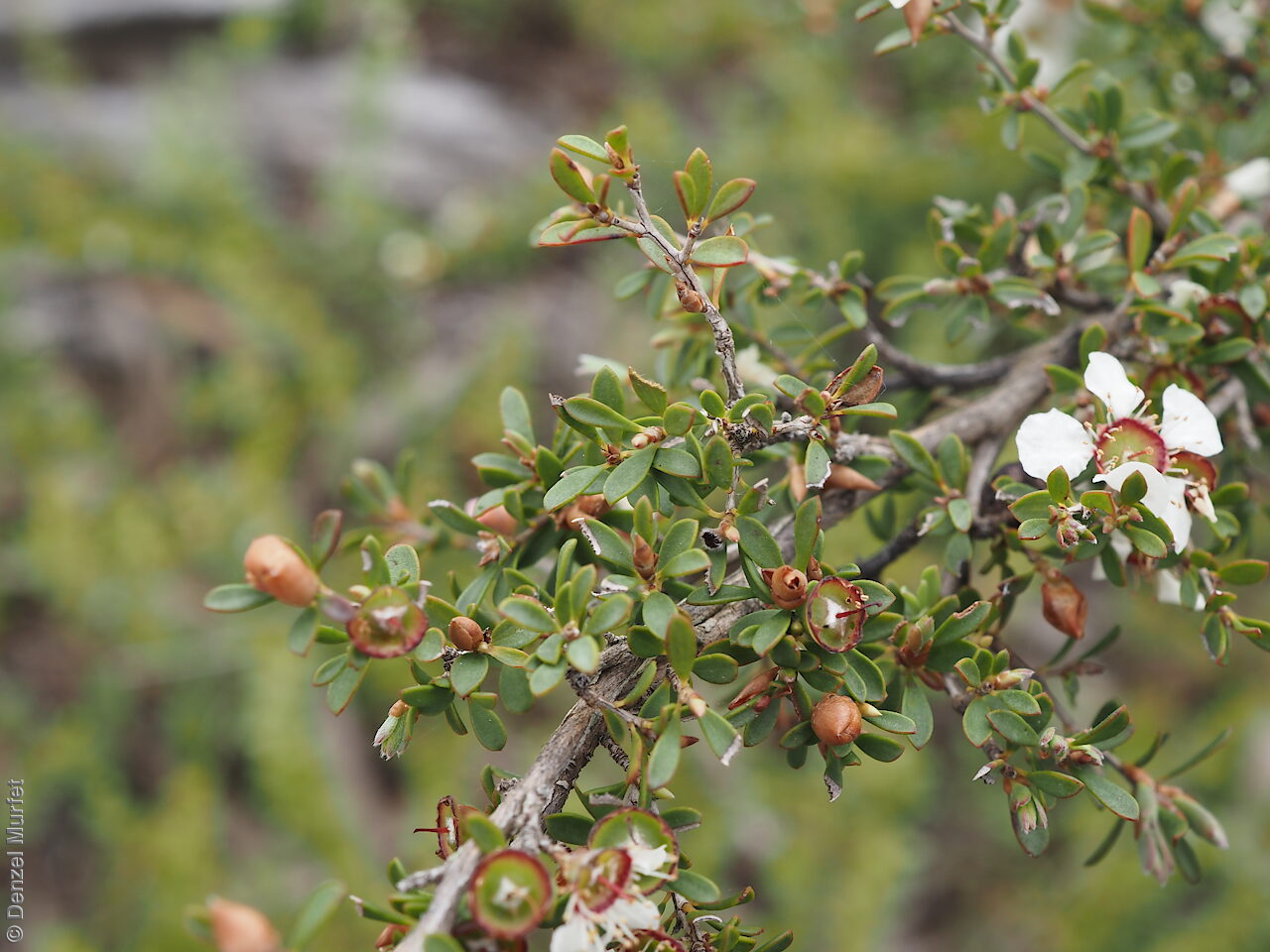
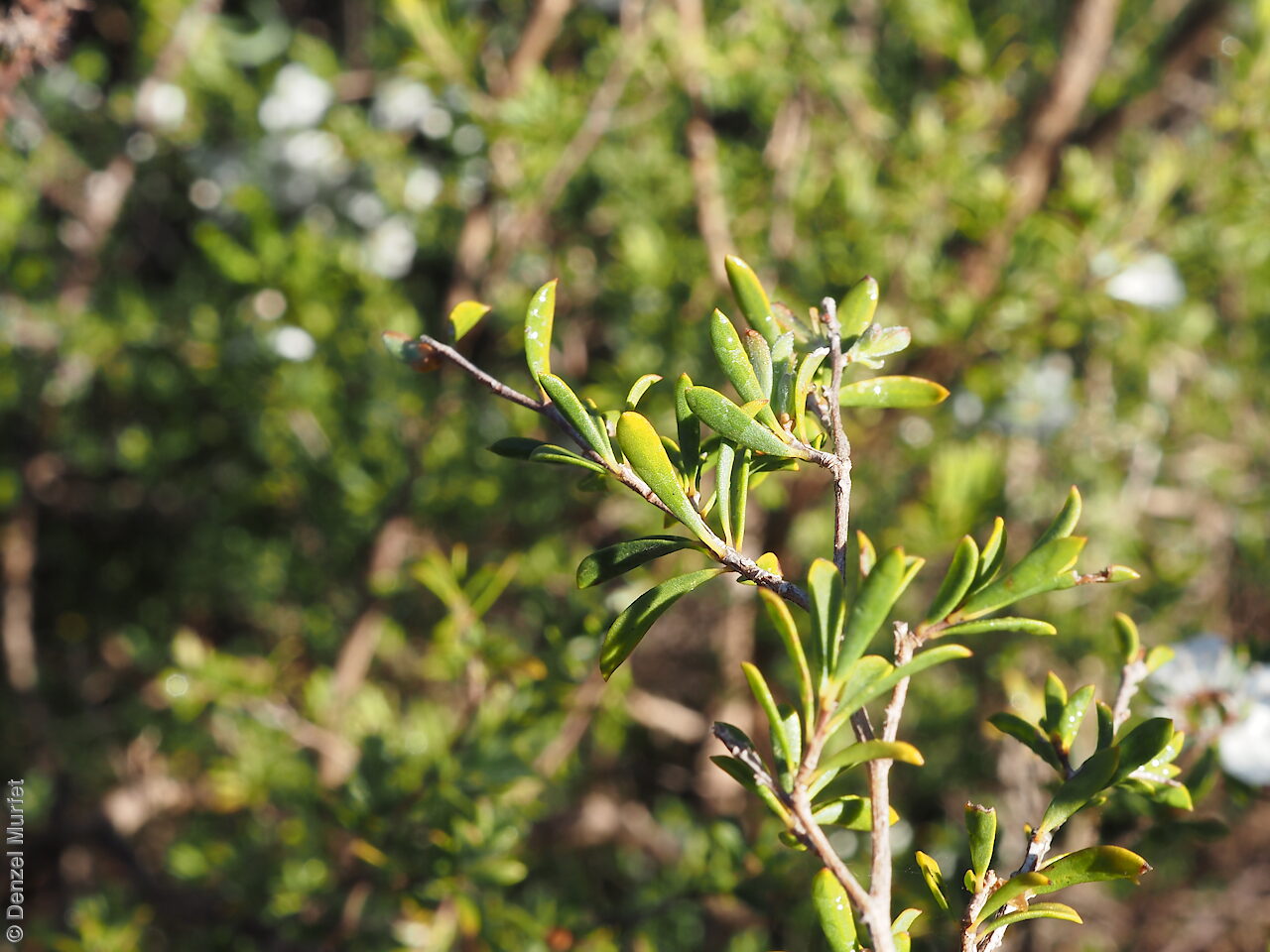
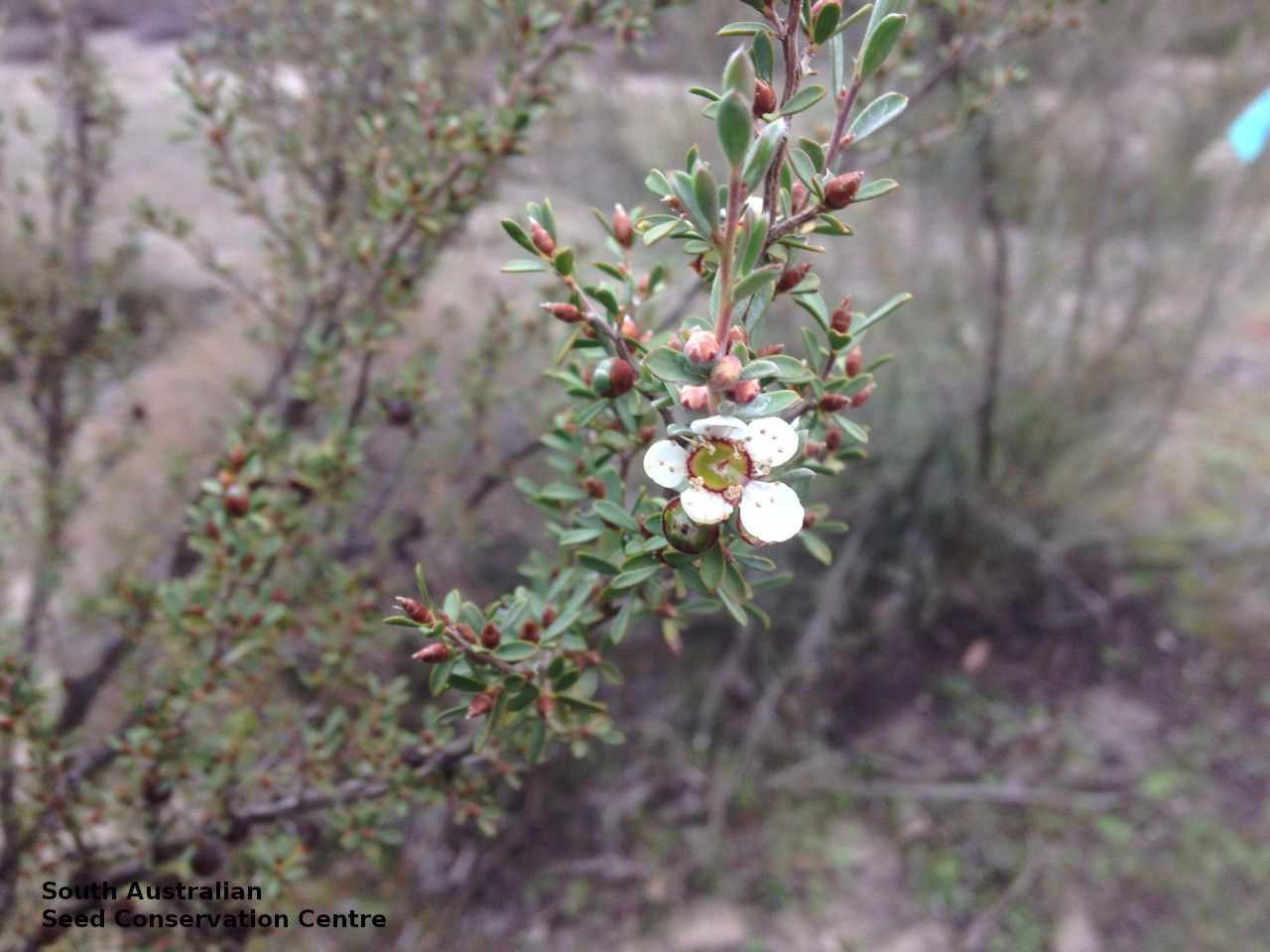
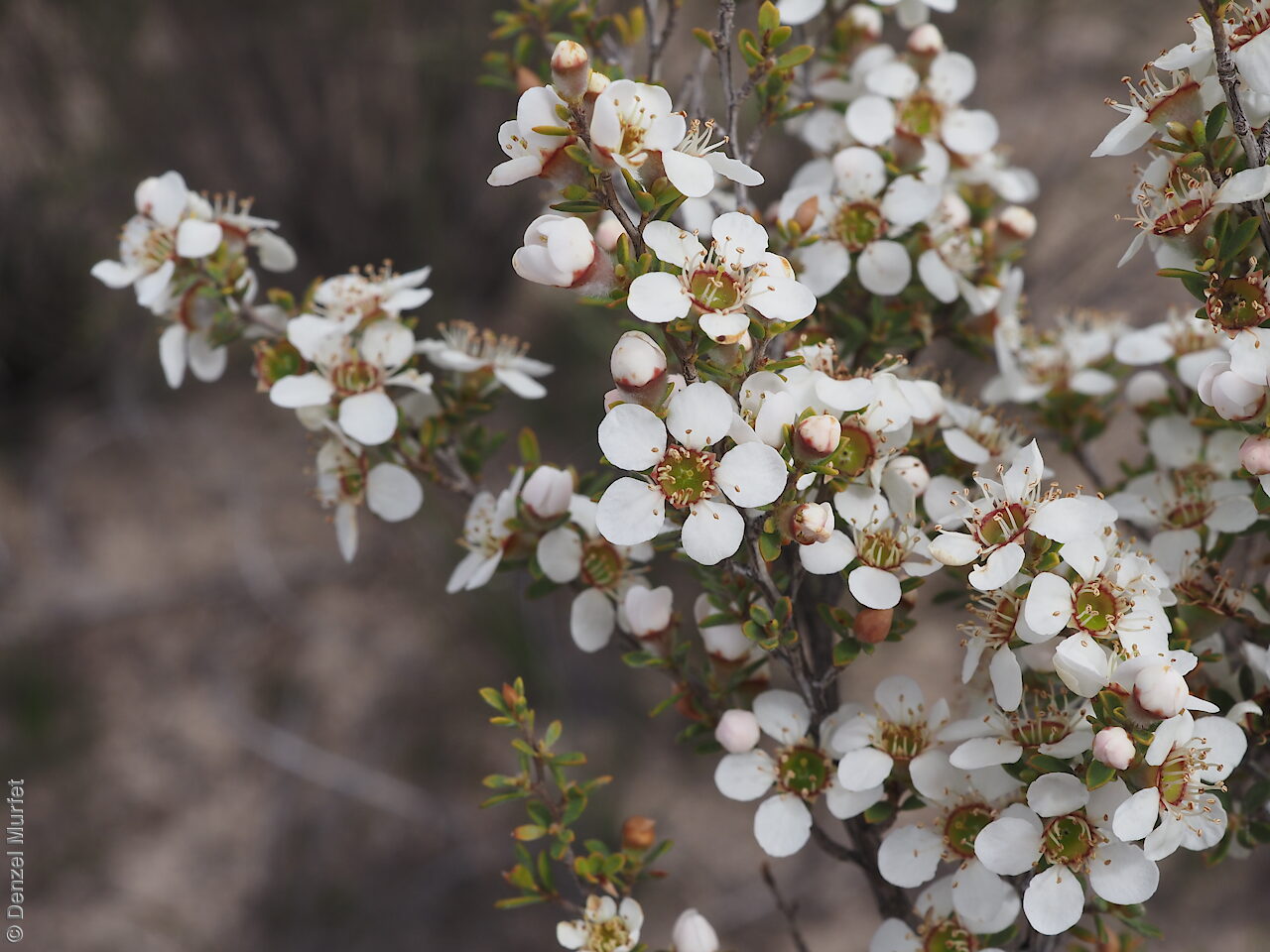

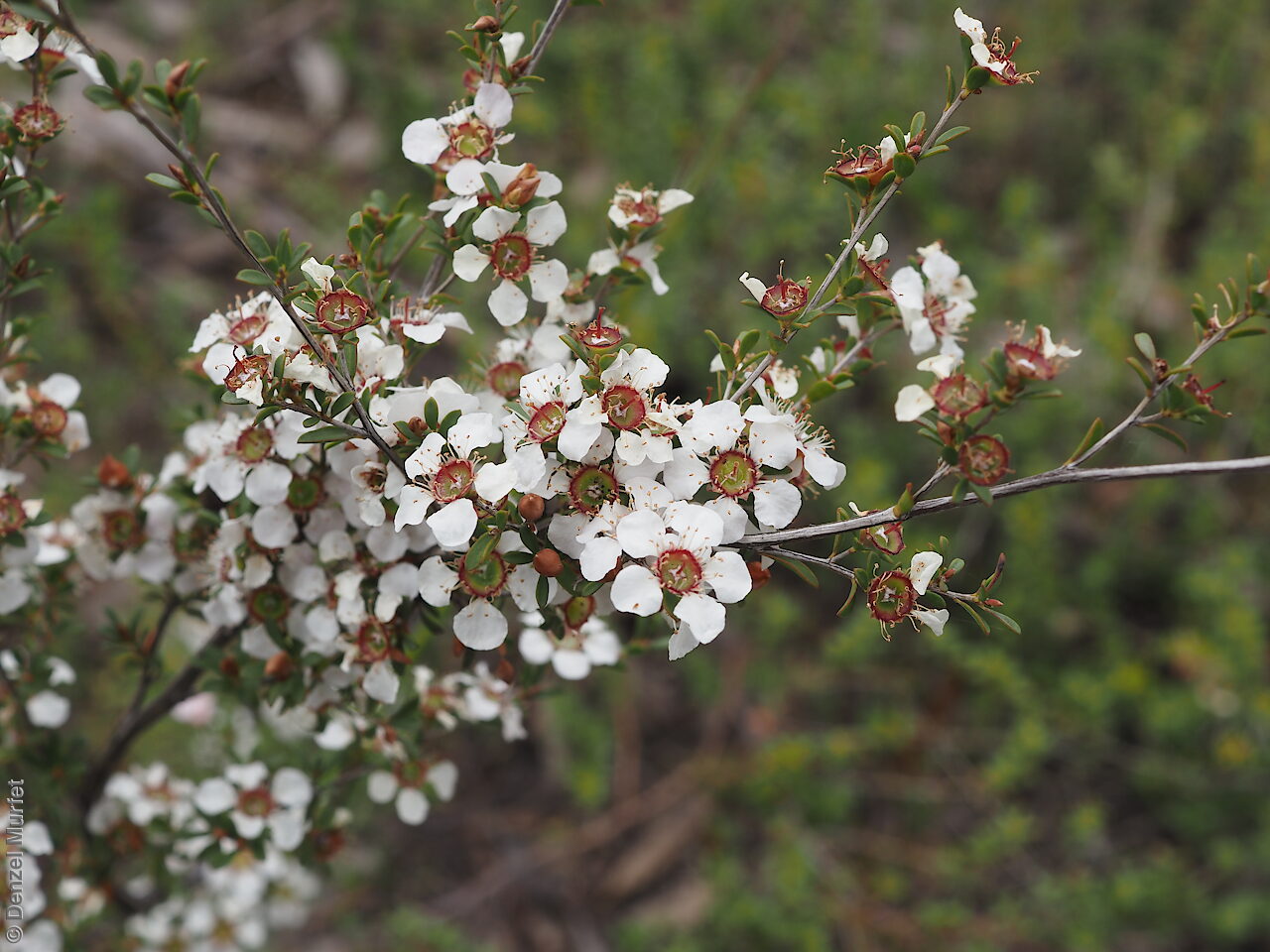
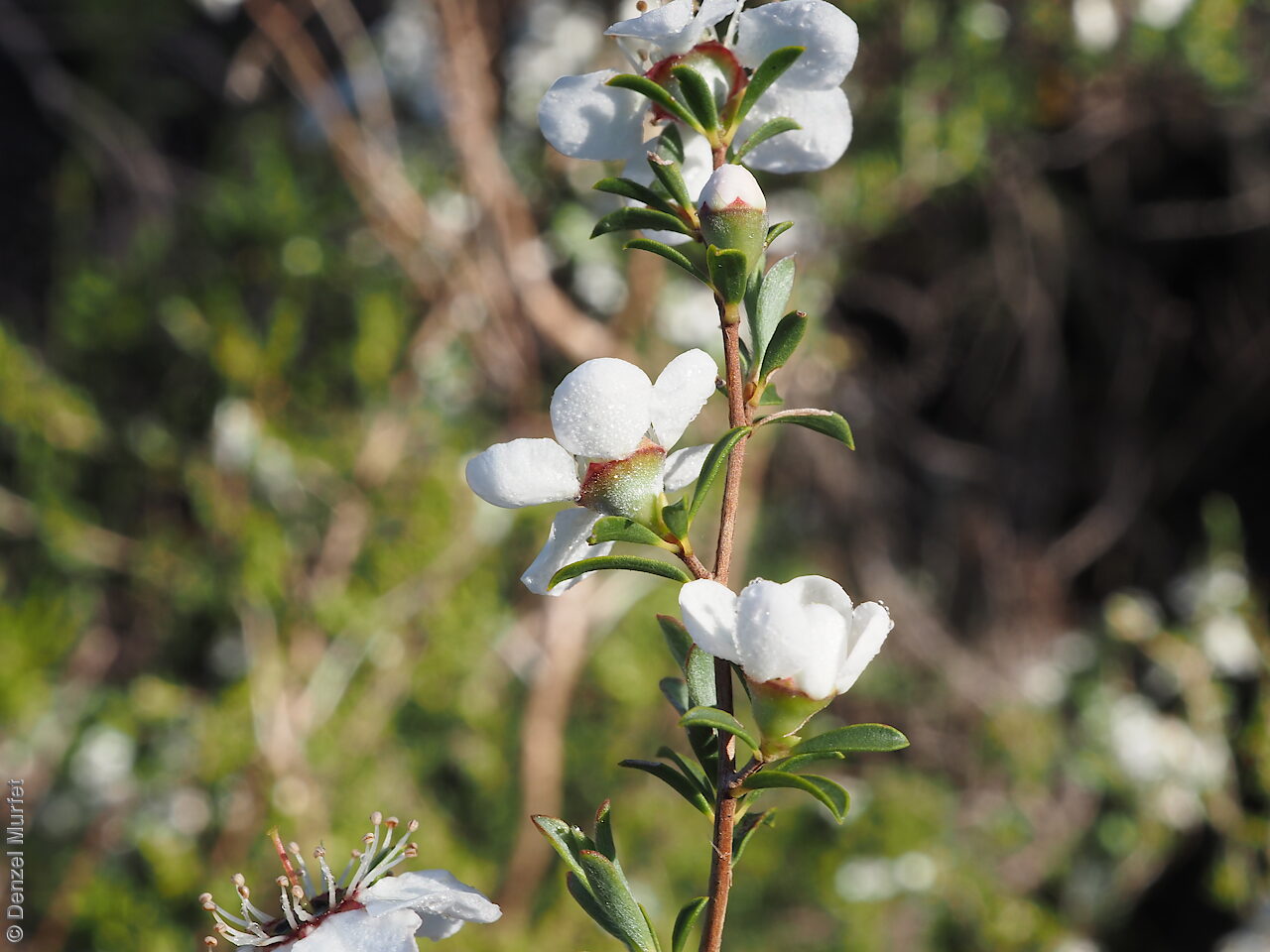
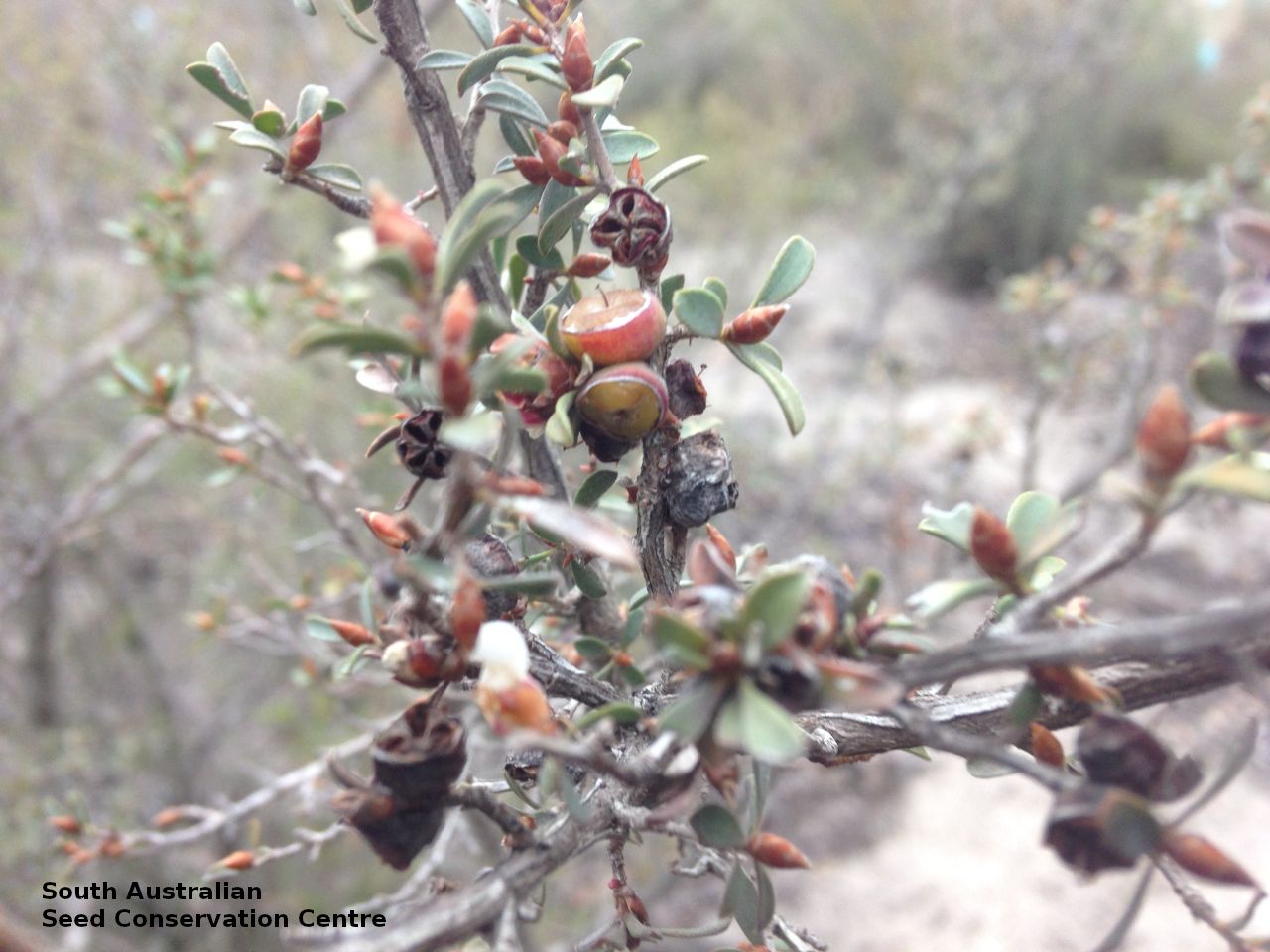
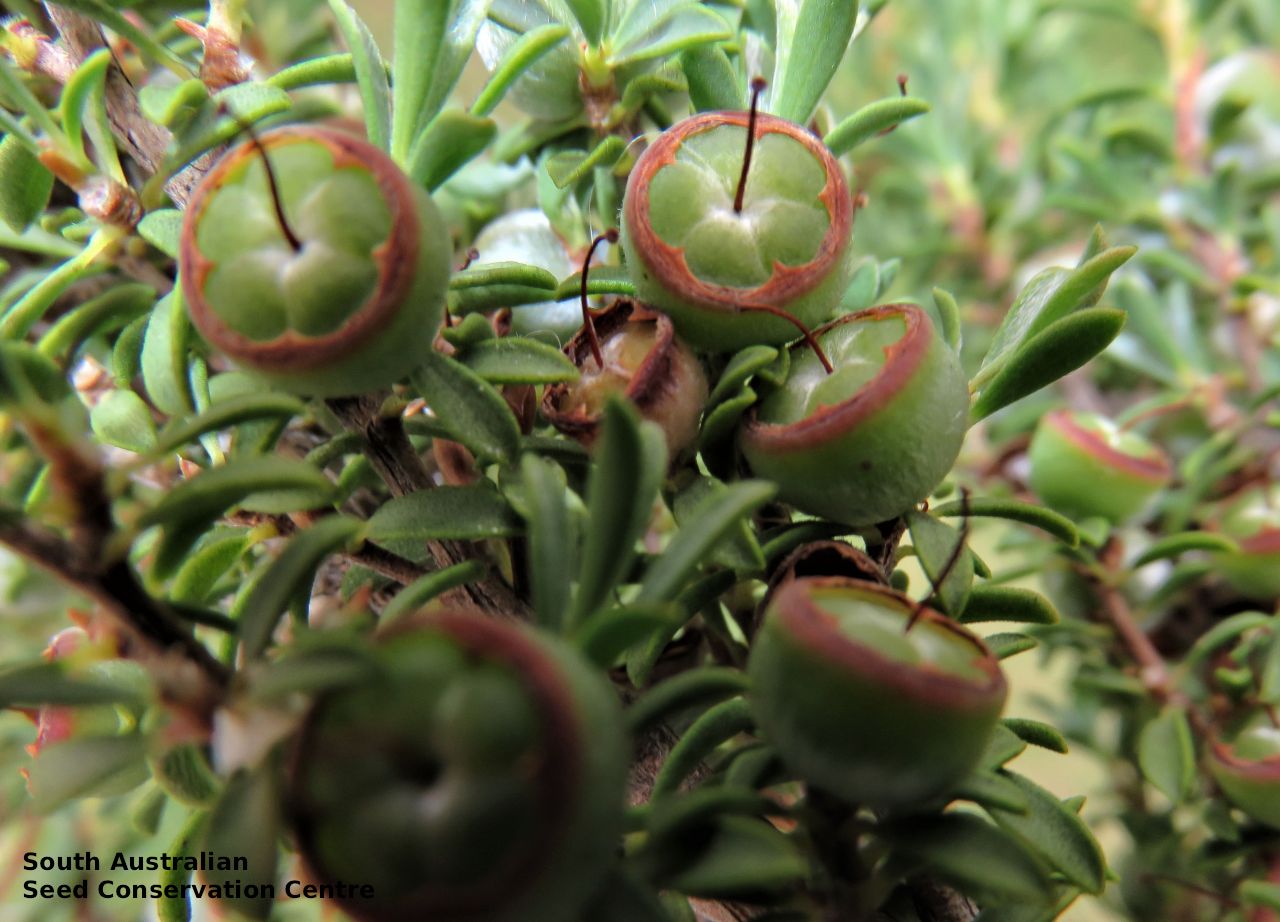
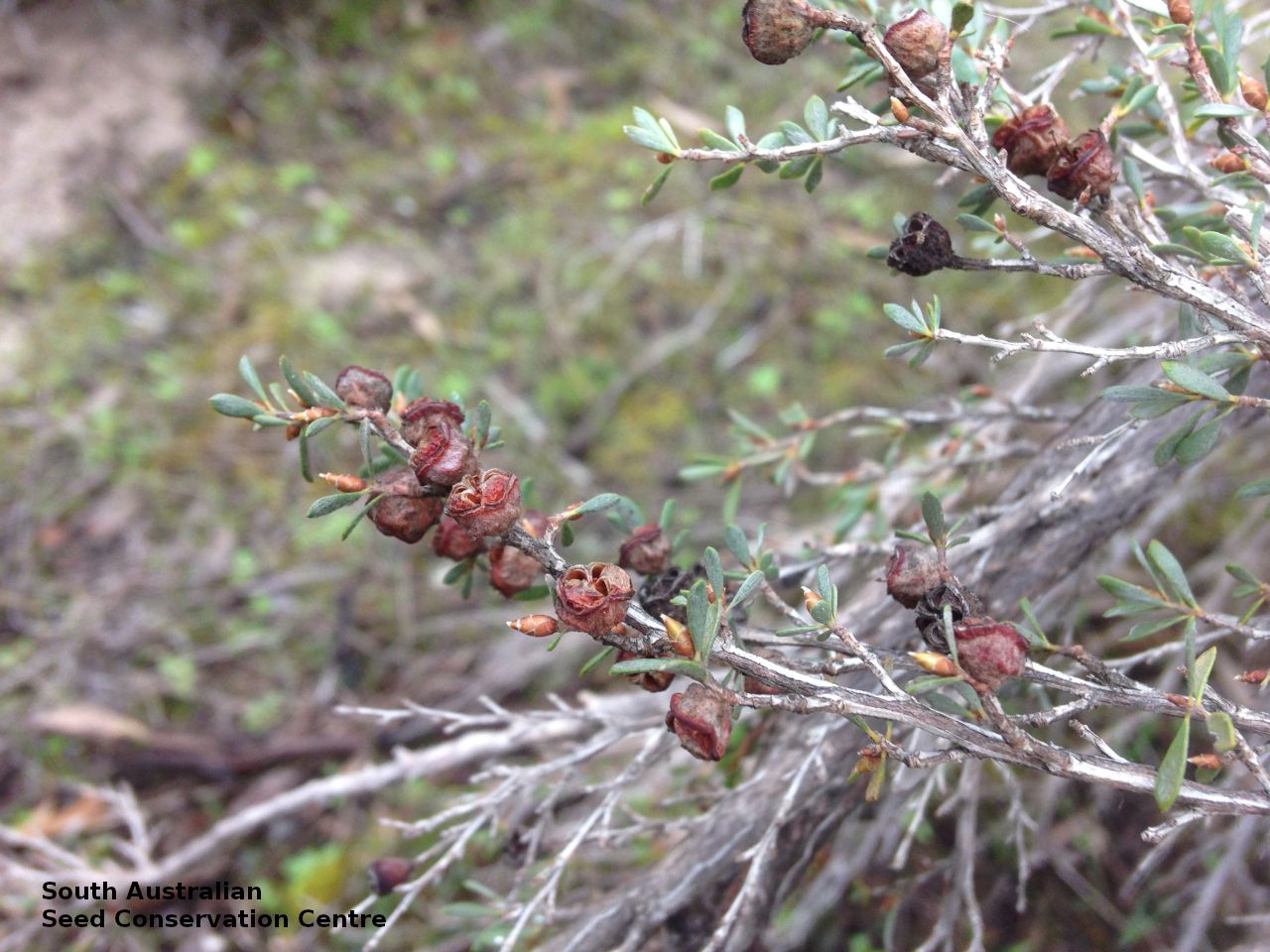
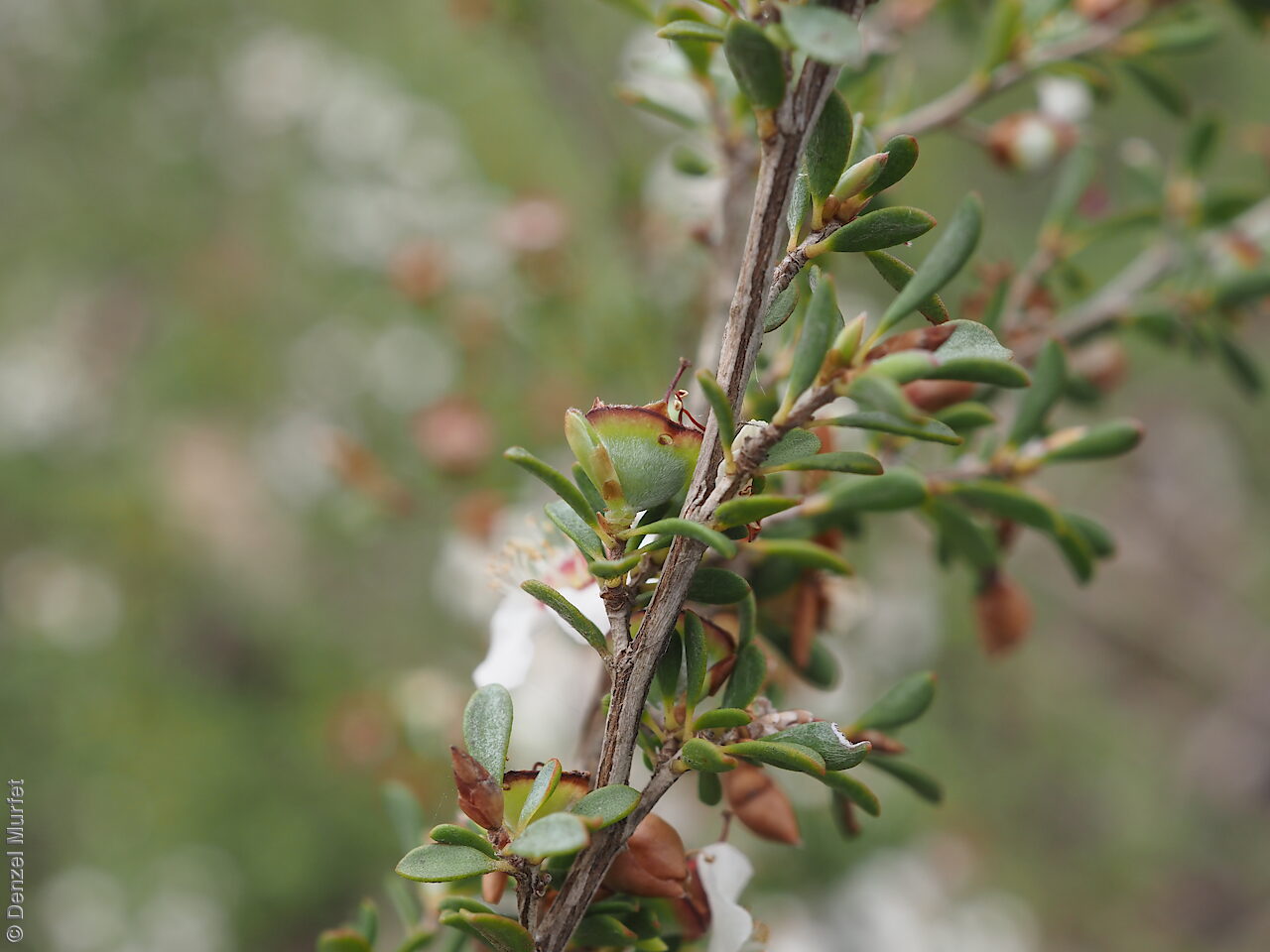
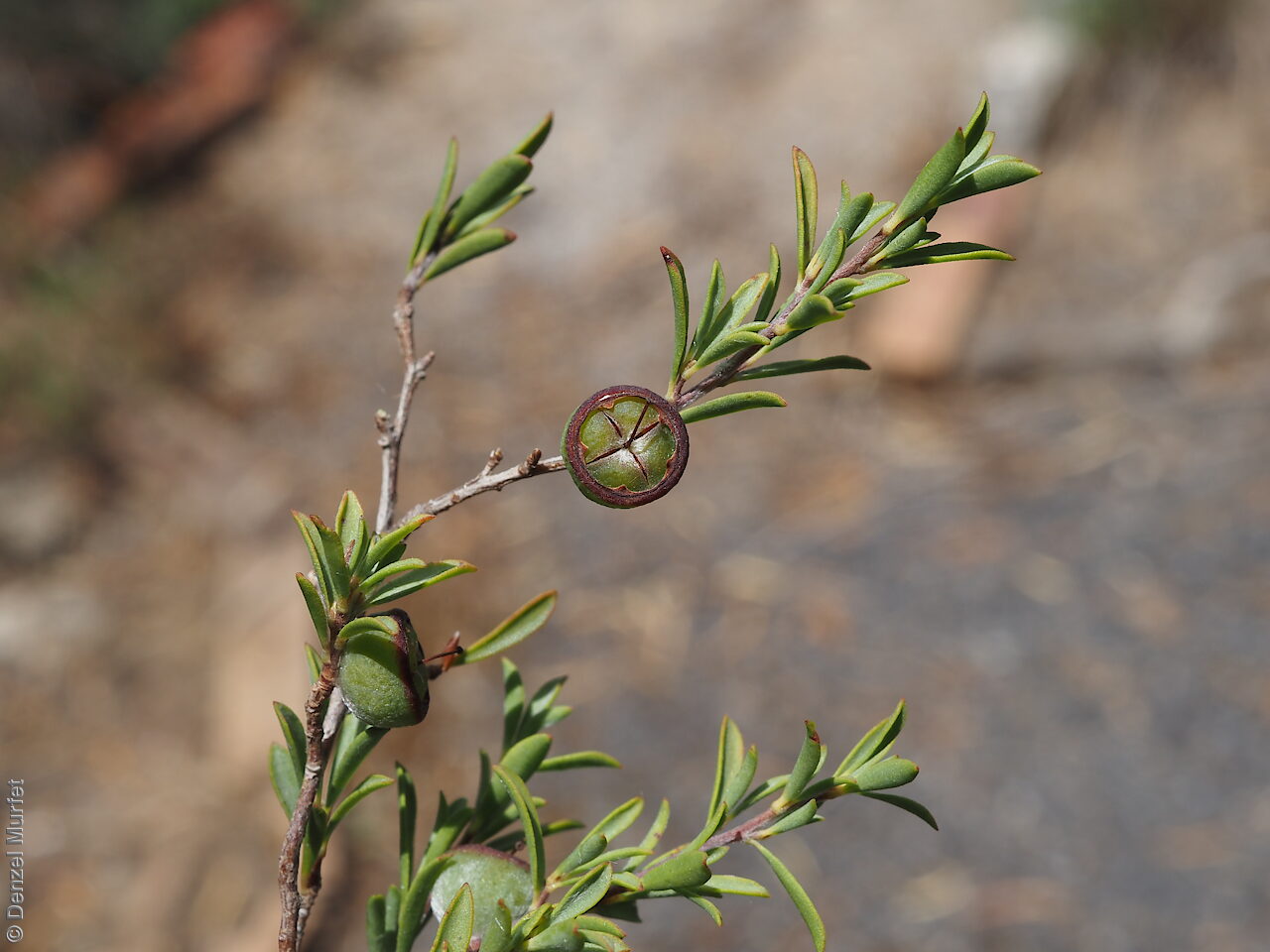
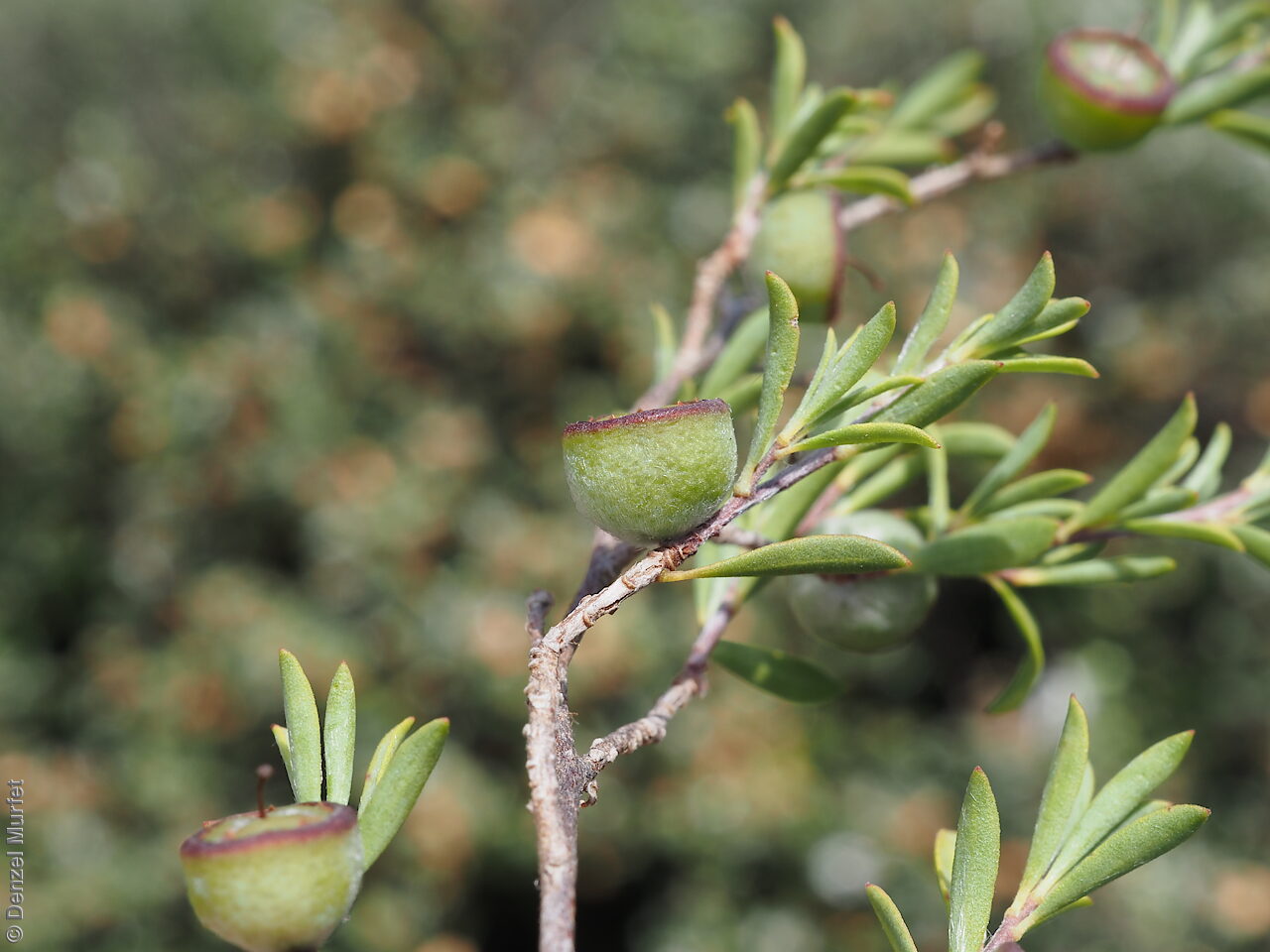
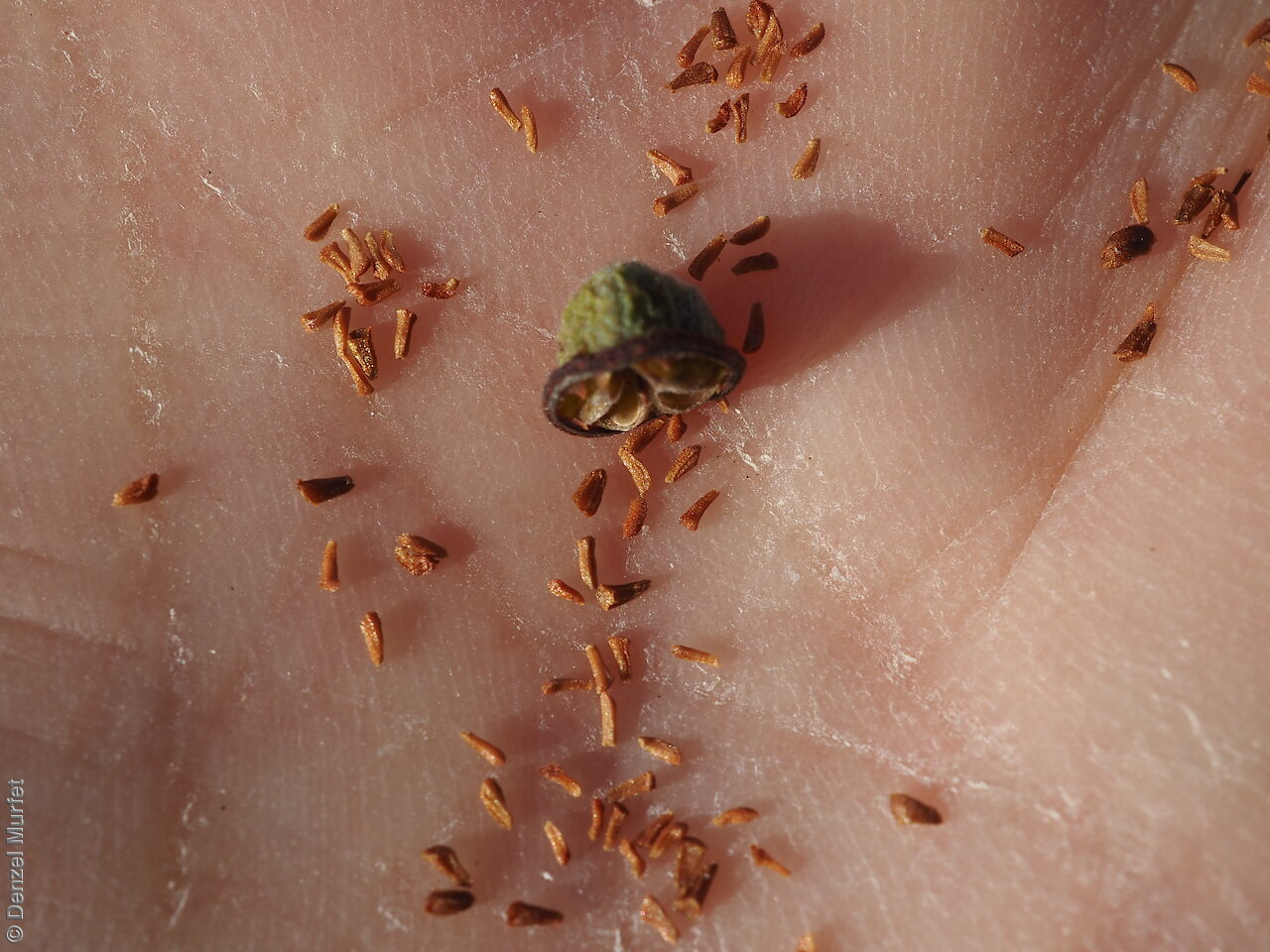
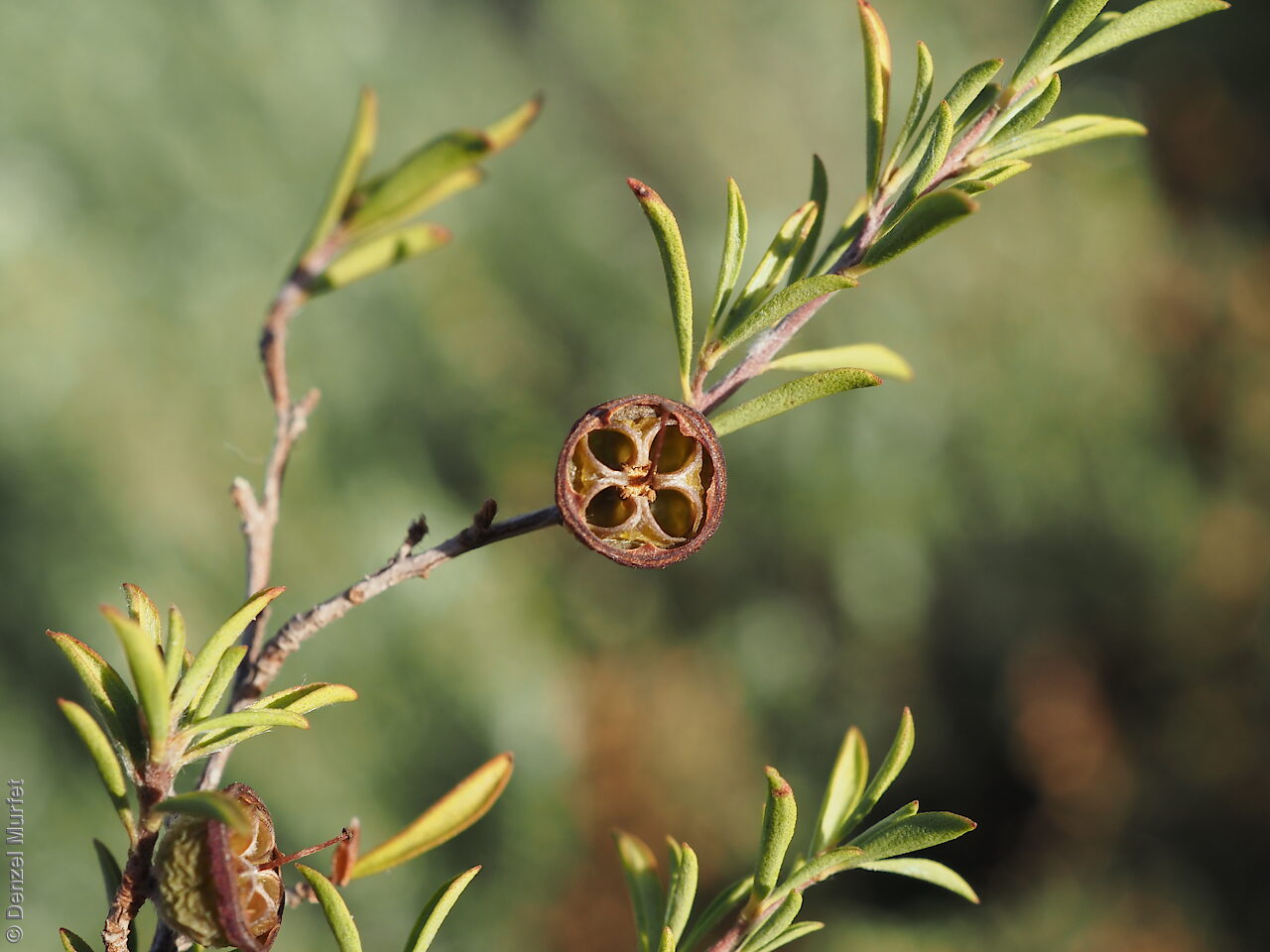
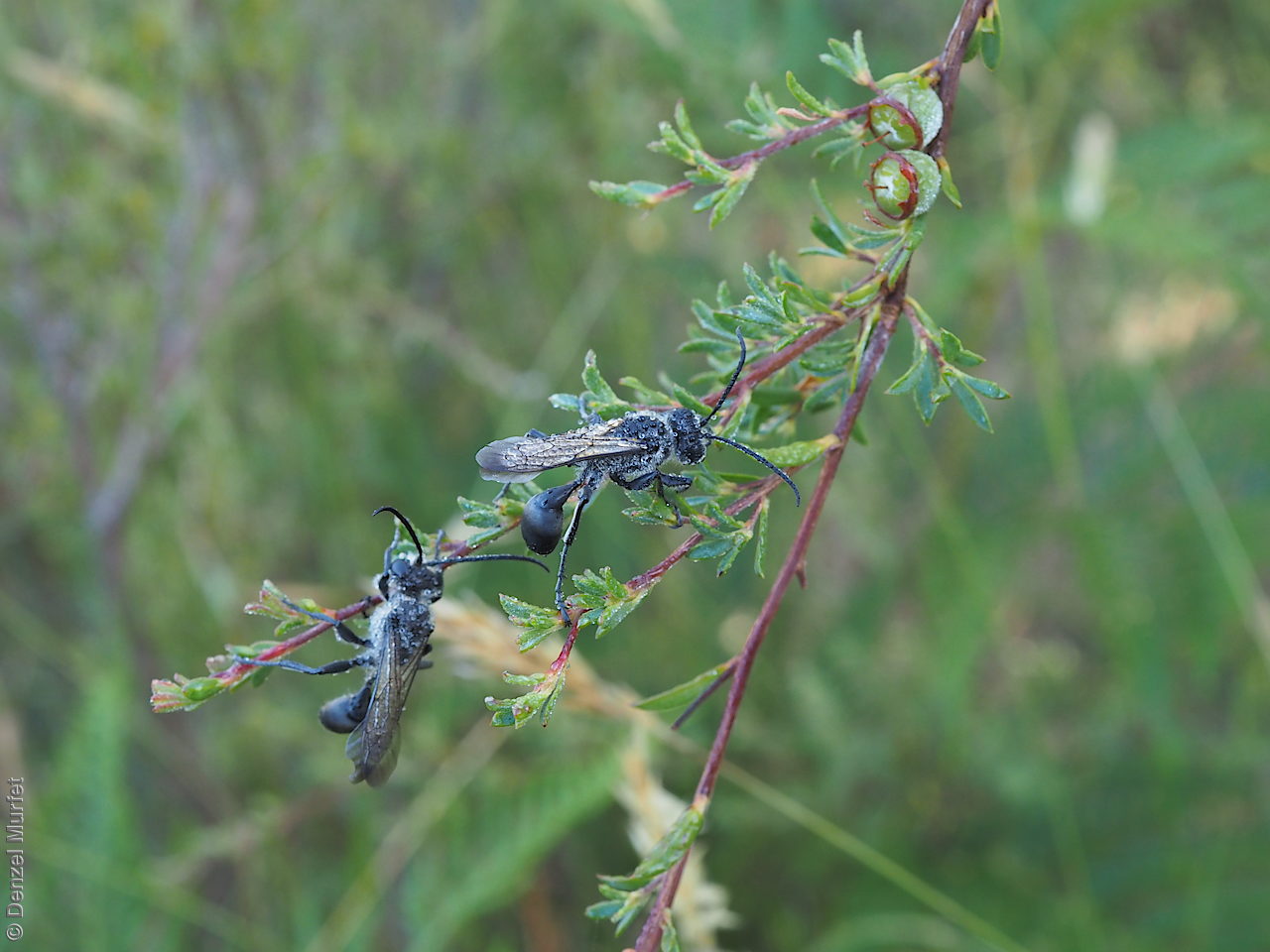
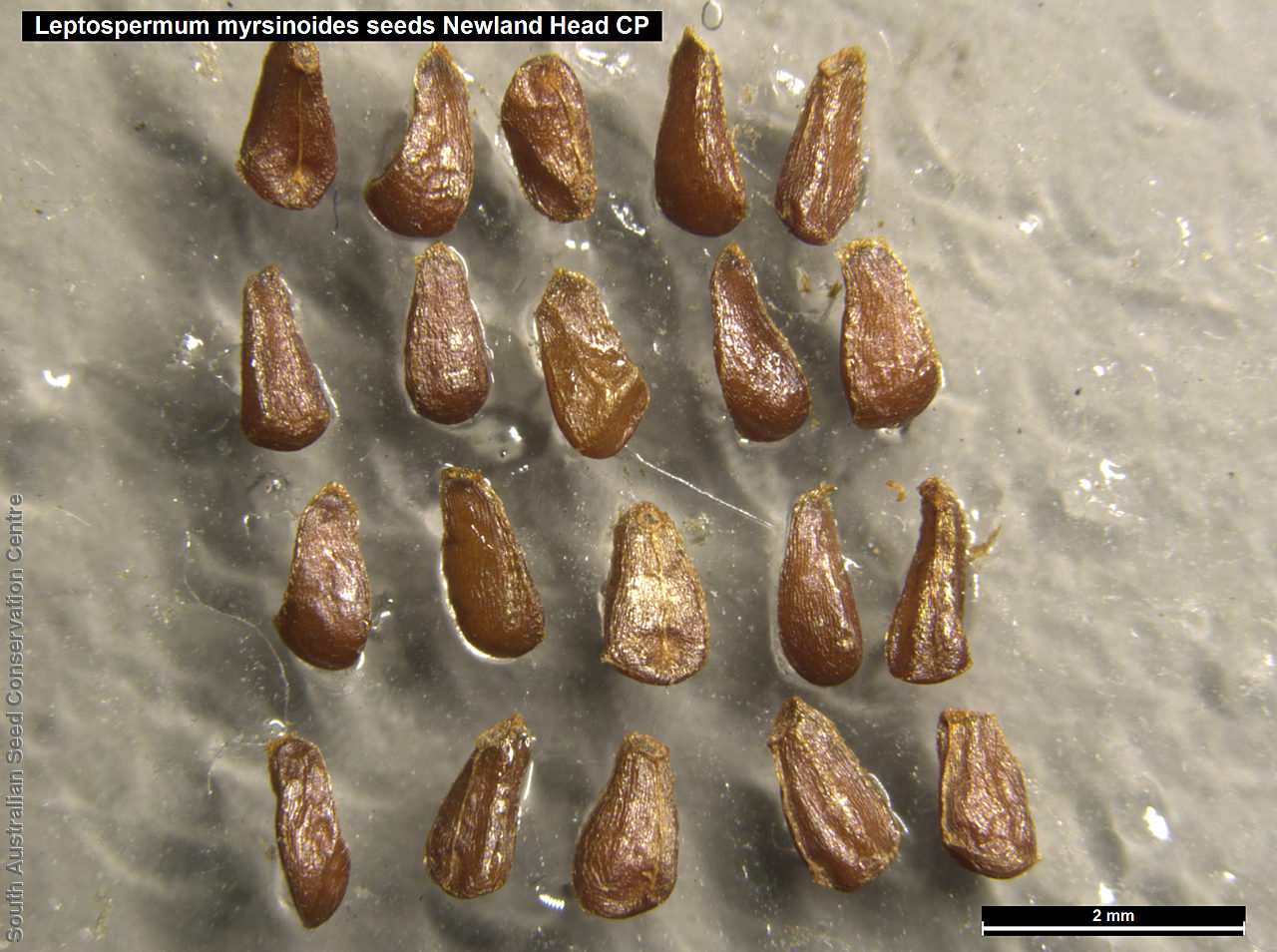
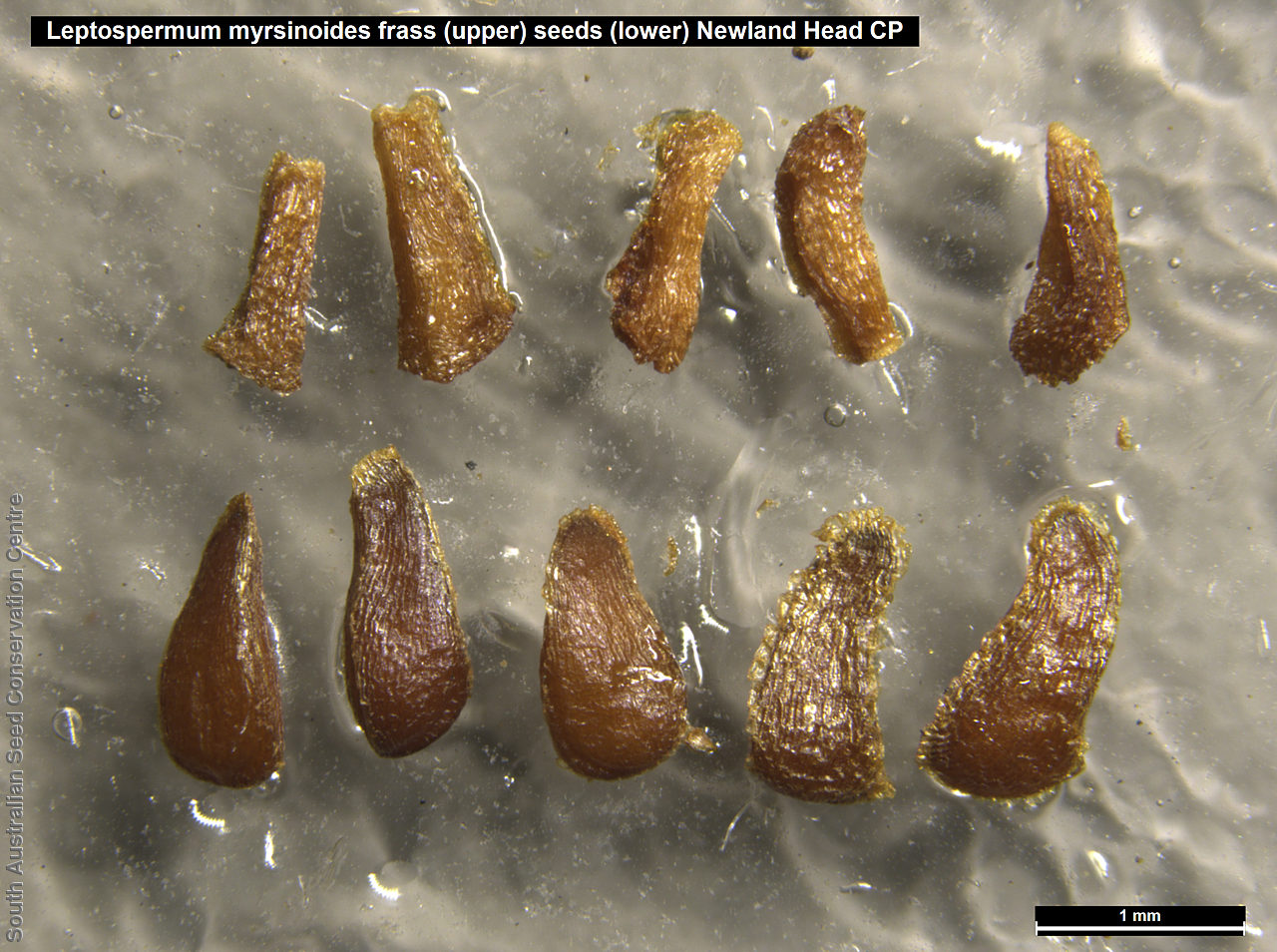

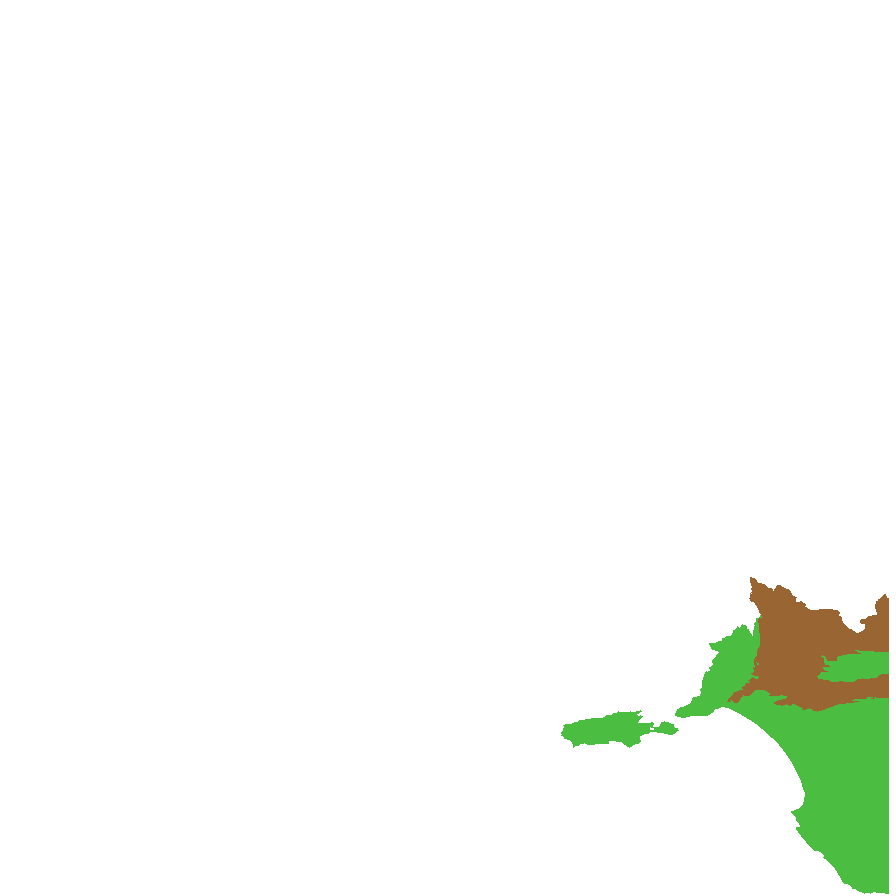
Botanical art
Prior names
Leptospermum myrsinoides var. latifolium
Leptospermum myrsinoides var. angustifolium
Etymology
Leptospermum from the Greek 'leptos' meaning fine, thin or slender and 'sperma' meaning seed; referring to the narrow seeds of the type species. Myrsinoides means resembling the genus Myrsine (Greek name for myrtle).
Distribution and status
Found on Kangaroo Island, Mount Lofty Ranges and the South-east in South Australia, growing in mallee-heath, heathy woodland and near-coastal heathland on sandy or swampy soils. Also found in New South Wales and Victoria. Native. Common in South Australia. Rare in New South Wales. Common in Victoria.
Herbarium regions: Northern Lofty, Murray, Southern Lofty, Kangaroo Island, South Eastern, Green Adelaide
NRM regions: Adelaide and Mount Lofty Ranges, Northern and Yorke, South Australian Murray-Darling Basin, South East
AVH map: SA distribution map (external link)
Plant description
Shrub to 2 m high with smooth bark on young stems. Leaves narrowly obovate to oblanceolate, to 10 mm long and 4 mm wide, glabrous. Inflorescence borne at the ends of short leafy side-shoots with white flowers to 15 mm wide. Flowering between October and November. Fruits are silky woody fruit to 6 mm wide, deciduous. Seeds are brown wedge-shaped seed 2 mm long and 0.7 mm wide, with a reticulate surface pattern. Seed embryo type is folded.
Seed collection and propagation
Collect seeds between January and December. Collect mature capsules, those that are turning brown, hard with non-open valves. Mature fruits can remain on the plant unopened for sometime but will eventually shed. Place the capsules in a tray and leave to dry for a week or two. This allows the valves on the fruit to open and release the seeds. Separate the seeds by placing all the materials into a bucket and shaking it to dislodge the seeds. Pass the material through a sieve to separate the unwanted material. The finer material will contain both seeds and frass usually distinguishable from each other. With finer sieves, the seeds can be separated from the frass but this is not essential for storage or propagation. Store the seeds with a desiccant such as dried silica beads or dry rice, in an air tight container in a cool and dry place. From one collection, the seed viability was low, at 40%. Seeds are non-dormant, viable seed should germinate readily.
| Location | No. of seeds (weight grams) | Number of plants | Date collected | Collection number Collection location | Date stored | % Viability | Storage temperature |
|---|---|---|---|---|---|---|---|
| BGA MSB | 4,000 (4.96 g) 4,000 (4.96 g) | 50+ | 5-Dec-2005 | DJD338 Southern Lofty | 8-Aug-2006 | 40% | -18°C |
Number of plants: This is the number of plants from which the seeds were collected.
Collection location: The Herbarium of South Australia's region name.
% Viability: Percentage of filled healthy seeds determined by a cut test or x-ray.